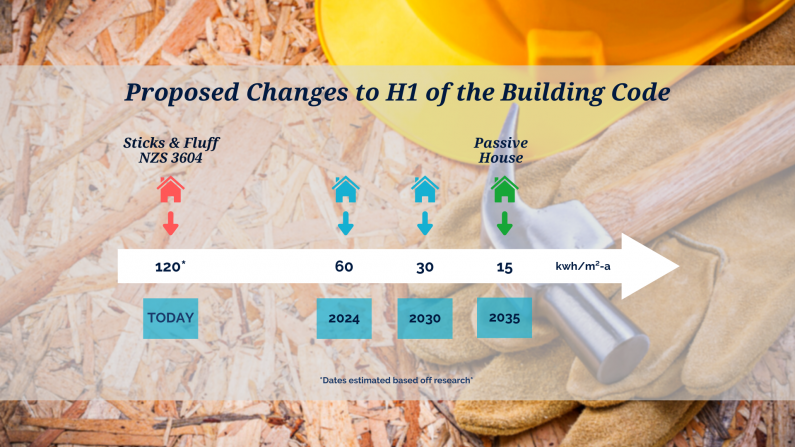Are you ready for the future?

In accordance with the Paris Treaty of 2016, New Zealand is committed to being carbon-neutral by 2050.
The Construction Industry plays an important part in achieving this goal, and consequently, the NZ Government has tasked MBIE (Ministry of Business, Innovation & Employment) with finding ways to align the industry with this goal.
MBIE states that 'The Building and Construction Sector needs to play its part in meeting this goal as the Sector currently accounts for around 20%* of New Zealand’s carbon emissions through the energy and materials used in buildings.'
MBIE has looked at the challenge and identified two key enabling factors that can play a critical role in influencing the speed at which the goal can be achieved. They are the New Zealand Building Code (NZBC) energy-demand thresholds, and the government's construction programs through the Ministry of Education (for schools) and Kainga Ora (for housing). By setting lower thresholds for energy demand, or putting it another way, higher thresholds for energy-efficient buildings in the NZBC, all new buildings granted building consent complying with these new levels will produce a lot less carbon during their operational lifetimes.
The two parts to carbon reduction are embodied carbon, which is all the carbon emissions that go into the building itself, including emissions from the manufacture and supply of the building and the emissions generated through the building of it. The other part to carbon reduction is operational carbon emissions which are all the emissions produced during the life of the building. Heating and cooling being a key part of the operation of any building means a more energy-efficient building envelope is a key focus.
Operational carbon emissions are best measured in relation to the heating and cooling demand on the building. Thankfully this demand is easily measured in kwh/h of electrical supply by simulating a building that is maintained at a temperature of ~20 degrees year-round, and then calculating the heating and cooling energy required to achieve that temperature in a given climate location. This is applicable to all building sizes by relating it to the area of the building, so the measurement becomes kwh/m2-a or kilowatt-hours per square meter per year.
To put this in perspective, a traditional timber frame and truss home built according to the minimum requirements of the current NZBC in the Christchurch climate performs at around 120 kWh/m2-a. MBIE is proposing that in order to meet the carbon-neutral by 2050 goal, the requirement change from 120 to 15 kwh/m2-a. They will achieve this by tightening the energy demand requirements in the building code in steps or caps to allow the industry to adapt to the changes required.
The dates and thresholds have not been fully decided as yet, but our best information is that they will be something like this:
60 kwh/m2-a by 2024
30 kwh/m2-a by 2028
15 kwh/m2-a by 2035
To read more about the changes to H1 of the building code: Read more on the MBIE website
It is possible to achieve 15 kwh/m2-a in any climate in New Zealand today by using advanced energy-efficient building methods. One of these methods is to use Structural Insulated Panels, such as the Formance system.
Formance panels have been used on projects in many parts of New Zealand to achieve the proposed 2035 requirements of 15kwh/m2-a threshold since 2015.
Until the 2035 threshold becomes mainstream the cost of achieving this level of energy-efficiency can be cost-prohibitive for certain projects so the 2028 or 2024 levels may be more appropriate. The differences between these levels can be modelled on any building by making subtle changes like increasing the thickness of the panels used in the building envelope, or by changing the window specification to include triple glazing and thermally broken window frames.
If you’re interested in ways to build cost-effective energy-efficient buildings we would love to talk to you about how the Formance system can help you achieve this.
Want to discuss your project? Get in touch here.
Looking to design with Formance? Download the Formance Design Guide here.
Looking for a builder? Check out our build partners around the country
Have a plan to price? Upload it here.







Post your comment
Comments
No one has commented on this page yet.
RSS feed for comments on this page | RSS feed for all comments